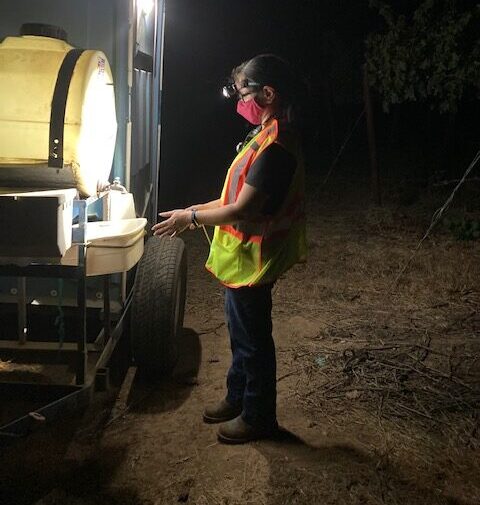
The 2020 season was definitely one for the history books. To say it was challenging does not even begin to scratch the surface of the issues the nut industry faced this year. However, perseverance has prevailed and now is an opportune time to wrap up 2020 and develop your plan of attack for 2021.
End of Season Employment Documentation
As you are terminating employment of your seasonal workers, ensure you are following your company protocol, individuals receive the appropriate information and that it has been accurately documented. AgSafe highly recommends you develop a checklist to ensure compliant departure; however, if you do not have one, please contact the AgSafe team and we would be happy to assist.
Your checklist should at a minimum include the following:
• Provide final paycheck and include unpaid vacation, PTO, other benefits
• Provide Final Paycheck Acknowledgement Form, signed by the employee
• Provide copy of Change in Relationship Form, signed by the employee and company representative
• Verify employee’s mailing address
• Provide For Your Benefit (California Employment Development Department Form 2320)
• Provide company retirement plan paperwork (if applicable)
• Collect any company equipment (if applicable)
• Move Form I-9 to inactive file
Paperwork Refresh
The start of a new year is when many government agencies update employment forms. Agencies expect employers do their due diligence to ensure they use the most current forms available. As such, it’s a good idea to double-check and make sure that you are using the most current version of the following:
• Form W-4 (IRS)
• Form I-9 (USCIS)
• Farm Labor Contractor Registration Application/Renewal • Form: WH-520 (USDOL)
It’s also important that you update terms of employment if you will be making any changes, including compensation as minimum wage increases. Employees should receive a current Notice to Employees (California Labor Code 2810.5) with wage rates and other applicable benefits. It is also a good opportunity to ask workers if they need to update their Emergency Contact Information, ensuring you have the most current details should a situation arise.
New Employment Requirements
Before many of us had COVID-19 on our radar, a number of new regulations came online in 2020 that require time and attention on your part. First and foremost, ensure your operation is compliant with Sexual Harassment Prevention and Abusive Conduct Training. As a reminder, supervisory employees needed to have completed a two-hour training and non-supervisory employees a one-hour training by Jan. 1, 2021. For additional details on this regulation and required training topics, visit the California Department of Fair Employment and Housing at dfeh.ca.gov.
Your To-Do list should also include registering for the CalSavers Retirement Saving Program. The deadline of Sept. 30, 2020 has already passed for employers that have 100 or more employees. California employers with 51 to 100 employees need to register by June 30, 2021, and those with 5 to 50 employees are required to register by June 30, 2022. Employers who already offer an employer-sponsored program are exempt, however they need to be certified through the online registration process. If you do not register your employees within 90 days of the deadline, there is a fine of $250 per eligible employee. The fine increases significantly to $500 per eligible employee once you are 180 days past the deadline. To learn more about CalSavers and to register, please visit calsavers.com.
And finally, be sure to incorporate the new safety standards into your Injury and Illness Protection Plan. This year, the Outdoor Agricultural Operations During Hours of Darkness was initiated as well as the Wildfire Smoke Protection Emergency Standard. Both of these regulations, along with the COVID-19 Prevention Emergency Standard, should be thoroughly reviewed by your team and the elements of the regulations implemented into your safety practices. If you need assistance with developing your safety protocol and trainings for these new standards, be sure to contact the AgSafe team for assistance. Additionally, it would be wise to inventory your personal protective equipment and ensure you are able to secure your safety equipment for next season. As we all know, sourcing N95s was almost impossible during the summer and harvest, but it provided an important lesson in being prepared for the unexpected.
Winding down the busy season can be made much smoother, and the start of next year much easier, by considering these simple but effective steps. For more information about worker safety, human resources, labor relations, pesticide safety or food safety issues, please visit agsafe.org, call (209) 526-4400 or email safeinfo@agsafe.org.















